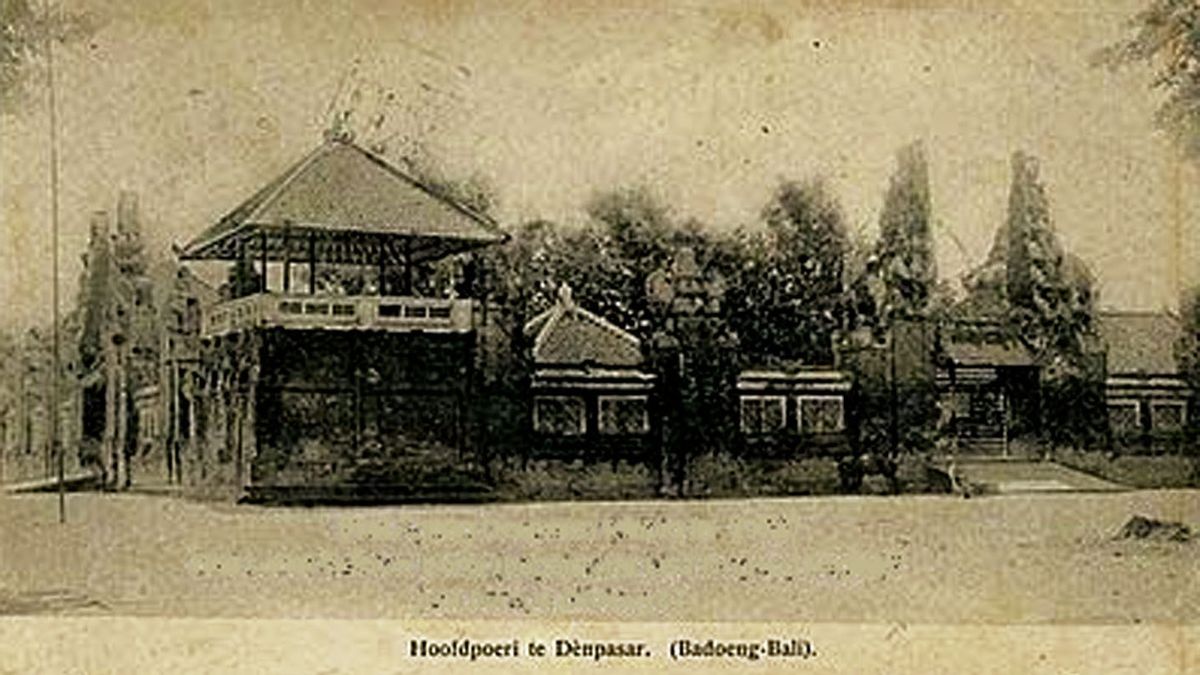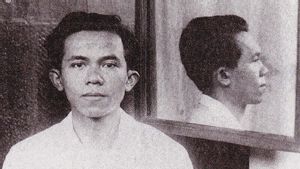
JAKARTA - The Puputan Badung War of 1906 is one of the most memorable wars against the Dutch colonialists and has made an impression on the minds of the Balinese people. In that war, all Balinese people led by King Badung VII, I Gusti Ngurah Made Agung, chose to perpetuate the tradition of puputan or an all-out war against the Dutch.
Puputan is a term that comes from the Balinese "puput", which means a ladder, breaking up, running out, or dying. In English, it means "conclusion" or "bringing to an end."
In essence, puputan means a complete end as a form of the honorable path chosen by the King of Badung during the war. Therefore, the Balinese recognize the puputan tradition as a form of maintaining the dignity of the King and Balinese people. As explained by Joko Darmawan in the book When the Archipelago Talks (2017), Balinese people believe in three things about puputan.
First, a Knight's life was at the point of the weapon. Death on the battlefield is an honor. Second, in defending honor, it is not known the term surrender to the enemy. Third, referring to Hinduism, those who die in battle will have their spirits in heaven.
The form of a knight in the battle of puputan was also written in a report by the Dutch East Indies newspaper, De Lokomotief. In 1908, they wrote that the belief of the Balinese people who chose to perpetuate puputan was a form of the way of life of a true knight. "You couldn't die in his house. It is cowardice. It's why there was a puputan. "

The Badung Puputan
The puputan war started when the Dutch-flagged ship owned by Kwee Tek Tjiang, Sri Kumala, ran aground on Sanur Beach, from the evening of May 27 to dawn, May 28, 1904. Upon the ship's wreck, the Dutch accused the villagers around the coast of looting the ship's cargo.
Written by P. Swantoro, in the book "Dari Buku Ke Buku: Sambung Menyambung Menjadi Satu" (From Book to Book: Connecting to Become One (2002)), on the grounds of ship looting, the Dutch colonial government demanded the King of Badung to pay 3,000 ringgit. However, the King of Badung refused. The King of Badung believed that he didn't violate the rules.
Long story short, the King of Badung's refusal was immediately answered with military action. “It cannot be denied that the Sri Kumala incident was only an excuse to launch a military expedition against Badung. The aim of the Dutch was actually to achieve supreme power over all regions that refused to submit, to implement the Dutch policy "Pax Neerlandica".
However, before taking military action, the Governor-General of the Dutch East Indies, Joannes Benedictus van Heutsz (1904-1909), sent a letter to the Minister of Colonies in October 1905. The contents were to convince the minister that the King of Badung needed to be aware of the Indies government. -The Netherlands is the "real ruler to obey."
The Puputan War
Dutch troops who had arrived in Bali on September 20, 1906, immediately took their military action. The Dutch, with modern war equipment, bombarded the territory of the Badung kingdom since early morning. They also threw bombs via Dutch warships that fell from the sky of Denpasar.
As a result, palaces, castles, and houses were also burned down. Therefore, Dutch soldiers quickly entered the kingdom. In a state of urgency, the king then decided to immediately fight back. To survive, it was no longer possible. Puputan was the only choice.
Details of the incident were written in the report of an eye witness, H.M van Weede. At that time, Weede was a rich tourist. He obtained permission to join the Dutch expedition in Bali. With that permission, Weede became an embedded journalist who joined the war troops.
Weede wrote that on the morning of September 20, 1906, the front yard of Puri Denpasar was a very impressive sight. It is depicted, starting from the King, empress, princes, servants, priests, and all citizens of the kingdom wearing all-white clothes equipped with kris as weapons.
"It seems that the prominent people gathered to end their lives in front of the Dutch troops. The King and his prince and his followers wore beautiful clothes, armed with a keris made of red or black gold. Their hair was neatly arranged with fragrant oil," said Weede.

Not only that, but the women also wore their most beautiful clothes, and all had white shawls. The King then ordered that the Castle be burned, and everything that could be destroyed should be destroyed immediately.
The King's party continued to move until finally, they met the infantry from the 11th Battalion. At that time, they were separated by a piece of land. When the Dutch troops ordered not to move, they got the opposite. The King's party moved quickly forward and finally ran towards the opposing stronghold.
Because of this, the Dutch troops fired the first shots. Among those who died first was the King of Badung. However, instead of retreating, the resistance intensified. They then tried to attack until finally blocked by bullets
The Balinese soldiers who were slightly injured stabbed their comrades, who were seriously injured, to death. Meanwhile, women try to open their chests to end their life. Some women even threw gold coins at the Dutch soldiers as a form of wages for their death.
Iksaka Banu also recorded the seconds of the incident in the book "Semua Untuk Hindia" (All for Hindia (2014)). Iksaka emphasized that the king's group wanted death. "Every time a line of fallen humans was swept away by a bullet, another layer immediately formed behind them, continued to face the death."
He also told of a priest trying to recite a prayer while jumping from side to side and stabbing his keris into the body of their dying colleague. This was alleged to ensure that the lives of his comrades were truly separated from their bodies.
The puputan event only lasted for one hour, namely 11-12 noon. After that, things became lonely with piles of corpses that had piled up in the field. To get an idea of the meaning of this event, the poetry created by the King I Gusti Ngurah Made Agung, who has an honorary title, Ida Betara Tjokorda Mantuk Ring Rana (the King who died in the battlefield) before he died:
Ande capung ngumbara ring langit, yan mating gah, ring tanah tan tanah, ring kayu boya kayune, ring batu boya batu, ring parigi boya parigi, ring apa boya apa, saru lebih saru, tingkah manone ring awak, sajatine, ada matukul ring ati, mati tan tumut pejah.
As quoted from Wayan Kun Adnyana in the book "Pita Maha: Gerakan Seni Lukis Bali 1930-an" (Pita Maha: Bali Painting Movement of the 1930s (2018)), those lyric was a geguritan tembang that has mandated the Ling's stance on a perfect death.
“Death is the estuary of the authenticity of the way of life. Death is not vanity, nor is it, on the other hand, not to waste a death. For him, it is better to die than live a colonized life," concluded Wayan Kun Adnyana.
The English, Chinese, Japanese, Arabic, and French versions are automatically generated by the AI. So there may still be inaccuracies in translating, please always see Indonesian as our main language. (system supported by DigitalSiber.id)









